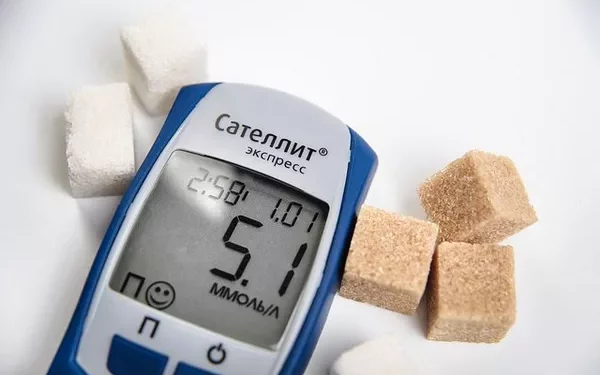Diabetes is a chronic condition that affects millions of people worldwide. It occurs when the body either cannot produce enough insulin (type 1 diabetes) or cannot use insulin effectively (type 2 diabetes), leading to elevated levels of blood glucose (sugar). The diagnosis of diabetes is based on blood sugar levels, which are measured using various tests. This article explores the blood sugar levels that indicate diabetes, how these levels are determined, and the importance of blood sugar monitoring in managing the condition. Understanding when blood sugar readings reach the threshold for diabetes is essential for early detection, diagnosis, and effective management of the disease.
The Role of Blood Sugar in Diabetes
Blood sugar, or blood glucose, is the primary source of energy for the body’s cells. When we eat, carbohydrates from food are broken down into glucose, which enters the bloodstream. In a healthy body, the hormone insulin helps cells absorb glucose to be used for energy or stored for later use. However, in people with diabetes, insulin is either not produced in sufficient quantities (type 1 diabetes) or the body becomes resistant to its effects (type 2 diabetes). As a result, glucose builds up in the bloodstream, leading to hyperglycemia (high blood sugar).
Blood glucose levels fluctuate throughout the day depending on food intake, activity levels, and medication use. However, consistently high blood sugar levels can cause serious health complications, such as heart disease, kidney damage, nerve damage, and vision problems. Proper blood sugar management is key to preventing these complications.
Understanding the Blood Sugar Test
To diagnose diabetes and monitor its progression, healthcare professionals use several tests to measure blood sugar levels. The most common tests used to diagnose diabetes include:
Fasting Blood Sugar (FBS): This test measures blood glucose levels after an overnight fast (at least 8 hours without eating). It is commonly used to detect diabetes and prediabetes.
Postprandial Blood Sugar (PPBS): This test measures blood sugar levels 1-2 hours after eating. It helps determine how the body handles glucose following a meal.
Oral Glucose Tolerance Test (OGTT): This test measures blood glucose levels after an overnight fast and then again two hours after drinking a sugary solution. It is commonly used to diagnose gestational diabetes and prediabetes.
Hemoglobin A1c (HbA1c): This test provides an average of a person’s blood sugar levels over the past 2-3 months by measuring the percentage of hemoglobin molecules in the blood that have glucose attached to them.
Random Blood Sugar Test: This test measures blood glucose levels at any time of day, regardless of when the person last ate. It is usually used when symptoms of high blood sugar are present.
Each of these tests has different target ranges for determining whether someone has diabetes. It’s essential to understand these measurements in the context of the diagnosis and overall blood sugar control.
Blood Sugar Levels for Diabetes Diagnosis
The diagnosis of diabetes is based on blood glucose readings that exceed certain thresholds. These thresholds are defined by major health organizations, such as the American Diabetes Association (ADA), the World Health Organization (WHO), and the Centers for Disease Control and Prevention (CDC). The following ranges are used to classify blood sugar levels and diagnose diabetes and its precursor conditions, such as prediabetes.
1. Fasting Blood Sugar (FBS)
The fasting blood sugar test measures glucose levels after an overnight fast. This test is typically the first step in diagnosing diabetes. It helps determine whether the body can regulate blood glucose levels effectively in the absence of food.
Normal: A fasting blood sugar level below 100 mg/dL (5.6 mmol/L) is considered normal.
Prediabetes: A fasting blood sugar level between 100 and 125 mg/dL (5.6 to 6.9 mmol/L) indicates prediabetes (impaired fasting glucose).
Diabetes: A fasting blood sugar level of 126 mg/dL (7.0 mmol/L) or higher, confirmed on at least two separate occasions, is diagnostic of diabetes.
If your fasting blood sugar level is above 126 mg/dL, it suggests that your body is unable to regulate blood glucose effectively, and you may be at risk for developing diabetes. Confirming this diagnosis with a second test is typically recommended.
2. Postprandial Blood Sugar (PPBS)
Postprandial blood sugar levels are measured after eating a meal. This test is useful for understanding how the body processes glucose after food intake and provides insight into how insulin responds to a meal.
Normal: A normal postprandial blood sugar level should be less than 140 mg/dL (7.8 mmol/L) one to two hours after eating.
Prediabetes: A postprandial blood sugar level between 140 and 199 mg/dL (7.8 to 11.0 mmol/L) indicates impaired glucose tolerance, a precursor to diabetes.
Diabetes: A postprandial blood sugar level of 200 mg/dL (11.1 mmol/L) or higher is diagnostic of diabetes, especially if it is accompanied by symptoms of high blood sugar.
After eating, blood glucose levels naturally rise as food is broken down into glucose. In people with diabetes, this rise is more prolonged and pronounced, as insulin does not work efficiently to lower blood sugar.
3. Hemoglobin A1c (HbA1c)
The HbA1c test is a measure of long-term blood sugar control. It reflects average blood glucose levels over the past 2-3 months and provides valuable insight into how well blood sugar has been managed over time.
Normal: An HbA1c level below 5.7% is considered normal.
Prediabetes: An HbA1c level between 5.7% and 6.4% suggests prediabetes.
Diabetes: An HbA1c level of 6.5% or higher on two separate occasions is diagnostic of diabetes.
For people with diabetes, the target HbA1c is generally below 7%, although individual targets may vary depending on age, overall health, and risk factors for complications. Achieving and maintaining a healthy HbA1c level helps to reduce the risk of long-term complications.
4. Oral Glucose Tolerance Test (OGTT)
The OGTT is a diagnostic test that measures how the body handles a large dose of glucose. After fasting overnight, a person drinks a sugary solution, and blood glucose levels are measured at intervals, typically one hour and again at two hours.
Normal: A 2-hour blood glucose level of less than 140 mg/dL (7.8 mmol/L) is considered normal.
Prediabetes: A 2-hour blood glucose level between 140 and 199 mg/dL (7.8 to 11.0 mmol/L) indicates impaired glucose tolerance.
Diabetes: A 2-hour blood glucose level of 200 mg/dL (11.1 mmol/L) or higher is diagnostic of diabetes.
The OGTT is most commonly used to diagnose gestational diabetes, but it is also used in some cases to diagnose type 2 diabetes and prediabetes.
5. Random Blood Sugar Test
A random blood sugar test measures blood glucose at any time of the day, regardless of when the person last ate. This test is often used when diabetes symptoms (e.g., excessive thirst, frequent urination, blurred vision) are present.
Normal: There is no specific “normal” range for a random blood sugar test, but blood glucose levels should generally be under 140 mg/dL (7.8 mmol/L).
Diabetes: A random blood glucose level of 200 mg/dL (11.1 mmol/L) or higher, along with symptoms of high blood sugar, suggests diabetes.
Although this test is useful for identifying elevated blood sugar, it is less commonly used than fasting and HbA1c tests for routine monitoring and diagnosis.
Why Is Blood Sugar Level Important in Diabetes Diagnosis?
Understanding the blood sugar levels that define diabetes is important for several reasons:
Early Detection: Early diagnosis of diabetes is critical to prevent complications. By identifying abnormal blood sugar levels early, healthcare providers can help individuals manage their condition through lifestyle changes, medications, and blood sugar monitoring.
Prevention of Complications: Consistently high blood sugar levels can lead to long-term complications, including cardiovascular disease, kidney damage, nerve damage, and vision problems. Early diagnosis and treatment can help prevent these outcomes.
Treatment Adjustments: Once a diagnosis of diabetes is made, blood sugar levels help guide treatment decisions. This includes the choice of medications, insulin therapy, and lifestyle modifications such as diet and exercise.
Blood Sugar Control: Knowing the target range for blood glucose levels enables individuals with diabetes to manage their condition more effectively. Proper blood sugar control is crucial for maintaining overall health and preventing complications.
Risk Factors for Diabetes
While anyone can develop diabetes, certain risk factors increase the likelihood of developing the condition. These include:
Family history: A family history of diabetes increases the risk.
Age: People over the age of 45 are more likely to develop type 2 diabetes.
Obesity: Excess weight, especially abdominal fat, is a major risk factor for type 2 diabetes.
Physical inactivity: A sedentary lifestyle increases the risk of diabetes.
High blood pressure and high cholesterol: These conditions often occur alongside diabetes.
Ethnicity: People of African American, Hispanic, Native American, and Asian American descent are at higher risk for diabetes.
Gestational diabetes: Women who had gestational diabetes during pregnancy are at increased risk for developing type 2 diabetes later in life.
Conclusion
Blood sugar levels play a crucial role in diagnosing and managing diabetes. The thresholds for diagnosing diabetes—based on fasting blood sugar, postprandial levels, HbA1c, and the oral glucose tolerance test—help healthcare providers determine whether someone has the condition. Early detection and proper management of blood sugar levels are essential for preventing complications and improving overall health. If you have concerns about your blood sugar levels, it’s important to work with a healthcare provider to develop a plan that includes monitoring, lifestyle changes, and medications if necessary. With the right care, individuals with diabetes can lead healthy, fulfilling lives.
Related topics:



























